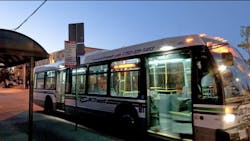BC Transit helps bring transit hubs to Comox Valley Regional District
Comox Valley Regional District (CVRD), with help from BC Transit and federal and provincial governments, is bringing five new transit hubs and bus priority lanes to the region.
The transit hubs will be constructed in four locations in the CVRD: South Courtenay, downtown Courtenay, downtown Comox and North Island College, as well as Oyster River in the Strathcona Regional District. These new transit hubs will help improve transit access, customer comfort and safety.
Since the announcement of the funding in February 2024, BC Transit, the CVRD and the local municipalities have been engaging key stakeholders and reviewing transit hub designs. Construction on the first two hubs will start in summer 2025 at the downtown Comox and North Island College locations.
Each hub will include concrete bus bays or curb areas that can accommodate heavy-duty buses. The project will also include improvements to pedestrian and road infrastructure, new bike racks, new larger bus shelters and the construction of a dedicated operator washroom facility at the South Courtenay exchange. Once completed, the project will enhance customer experience, as well as service operations, while facilitating service increases and ridership growth.
Background on transit hubs
BC Transit and local government partners in the Comox Valley Transit System are building five new transit hubs that will improve transit services in the Comox Valley. The joint investment of C$8.8 million (US$6.4 million) between the government of Canada, province of British Columbia, CVRD and BC Transit will fund enhanced bus stop amenities to improve the overall rider experience.
These hubs support the continued development of the Frequent Transit Network corridor and Local Transit Network through the growing communities in the Comox Valley.
A transit hub is a group of bus stops in one place making it easier for people to transfer between bus routes. Each hub may feature:
- New Bus bays and curbs
- New shelters and benches
- Drainage improvements
- Bike racks
- New wider sidewalks
- New landscaping
- Road reconstruction
- An operators’ washroom
The design will align with Security Achieved through Functional Environmental (SAFE) design standards and Crime Prevention through Environmental Design (CPTED) as required by BC Transit.
